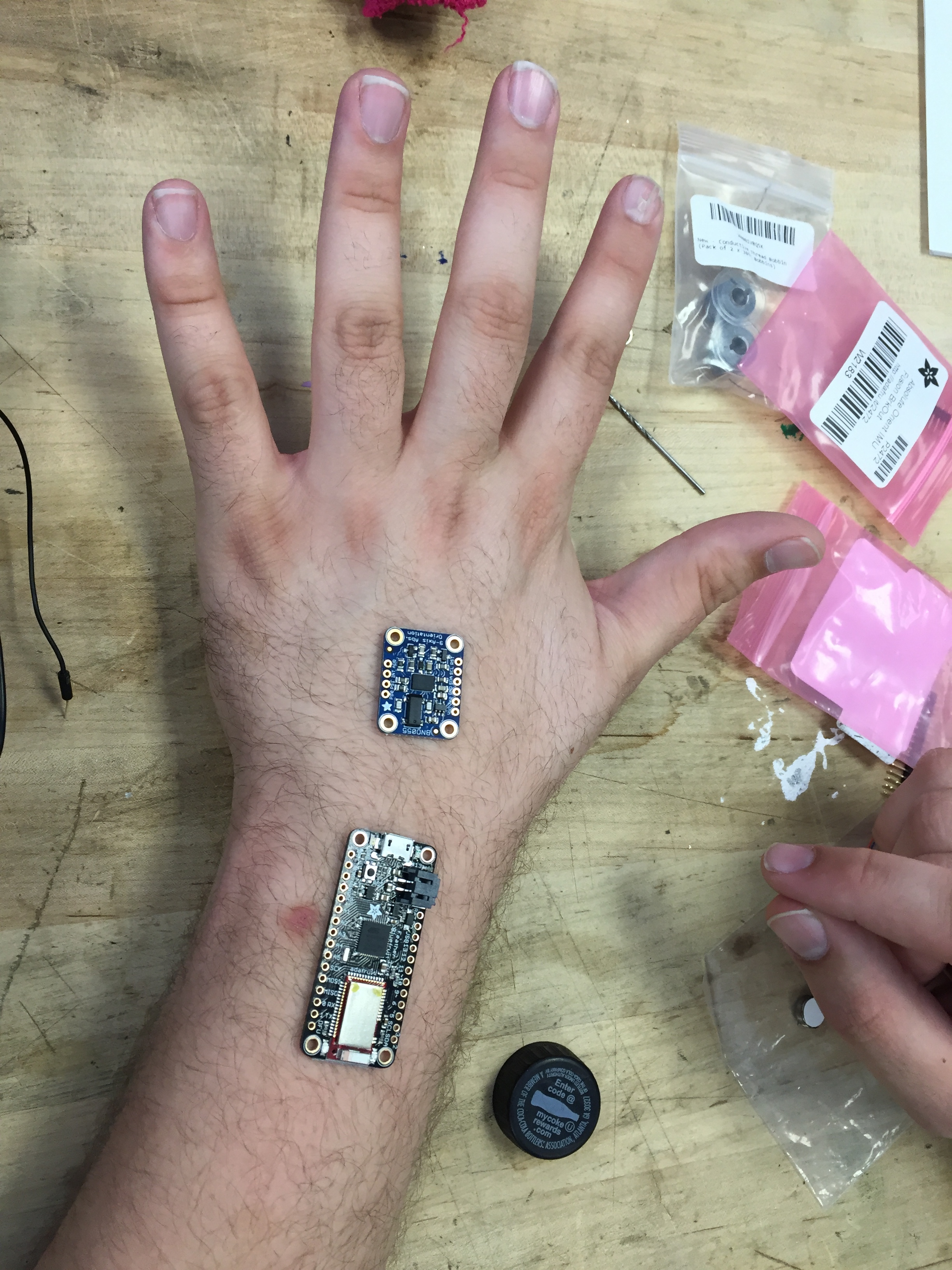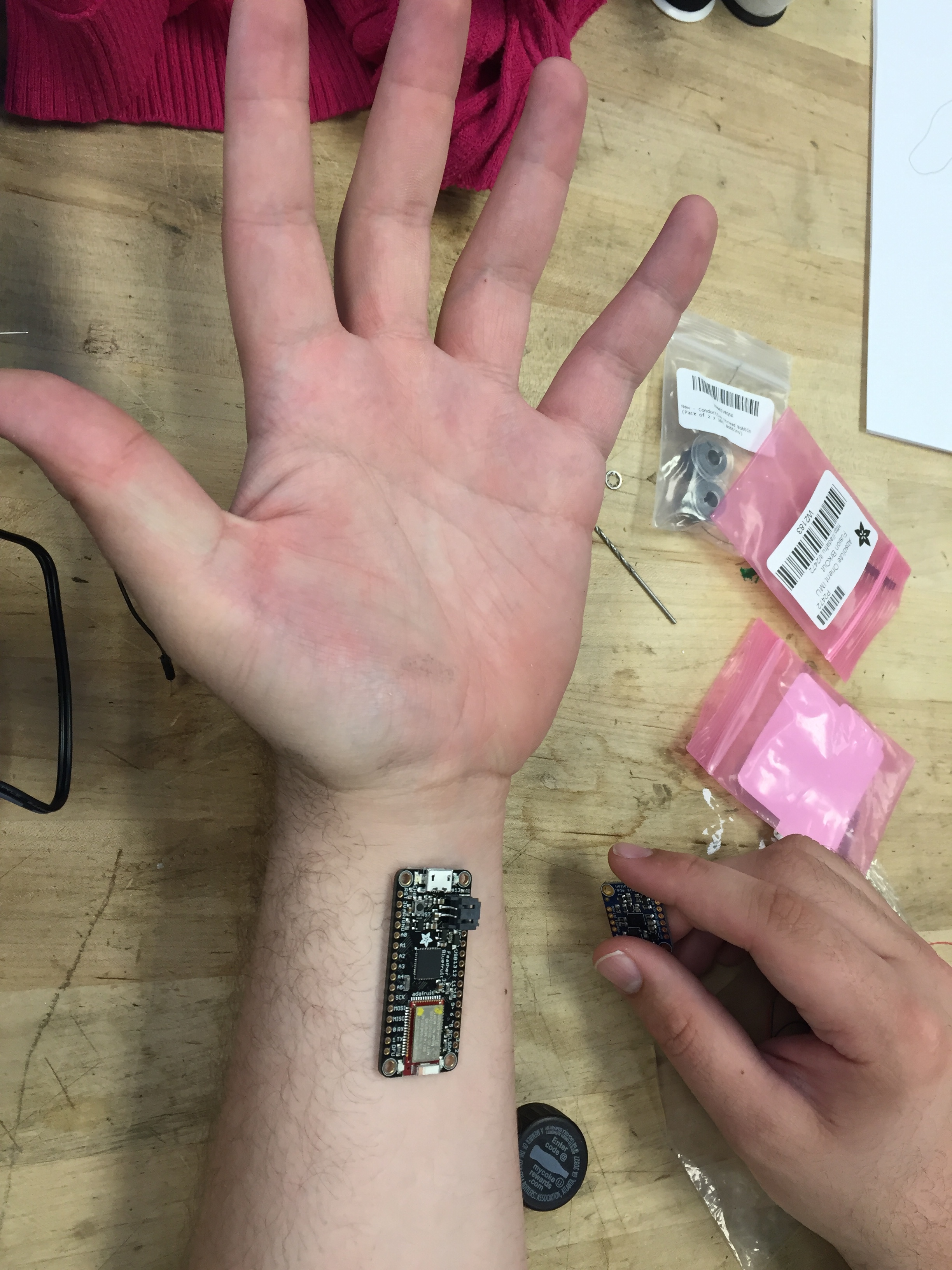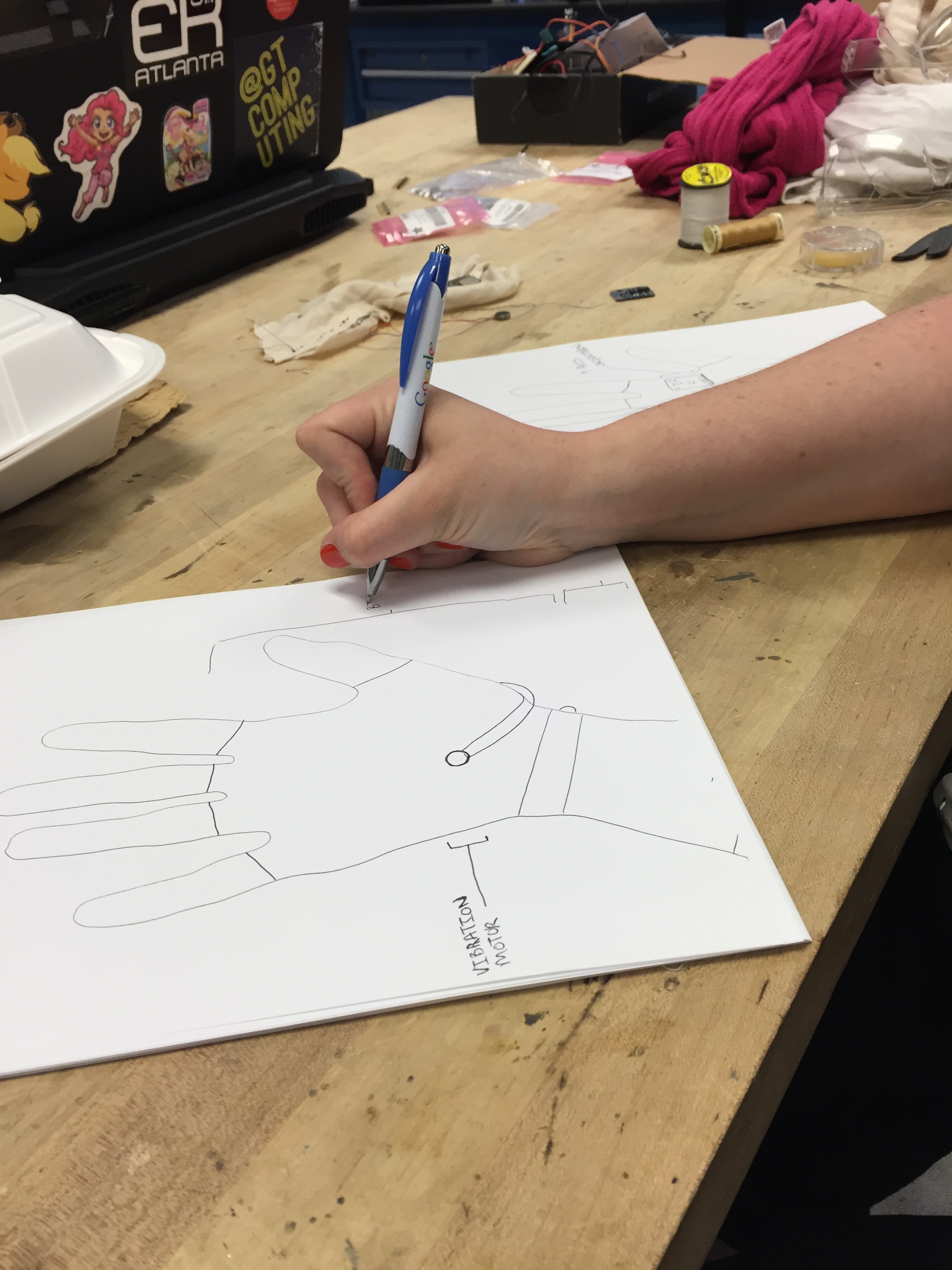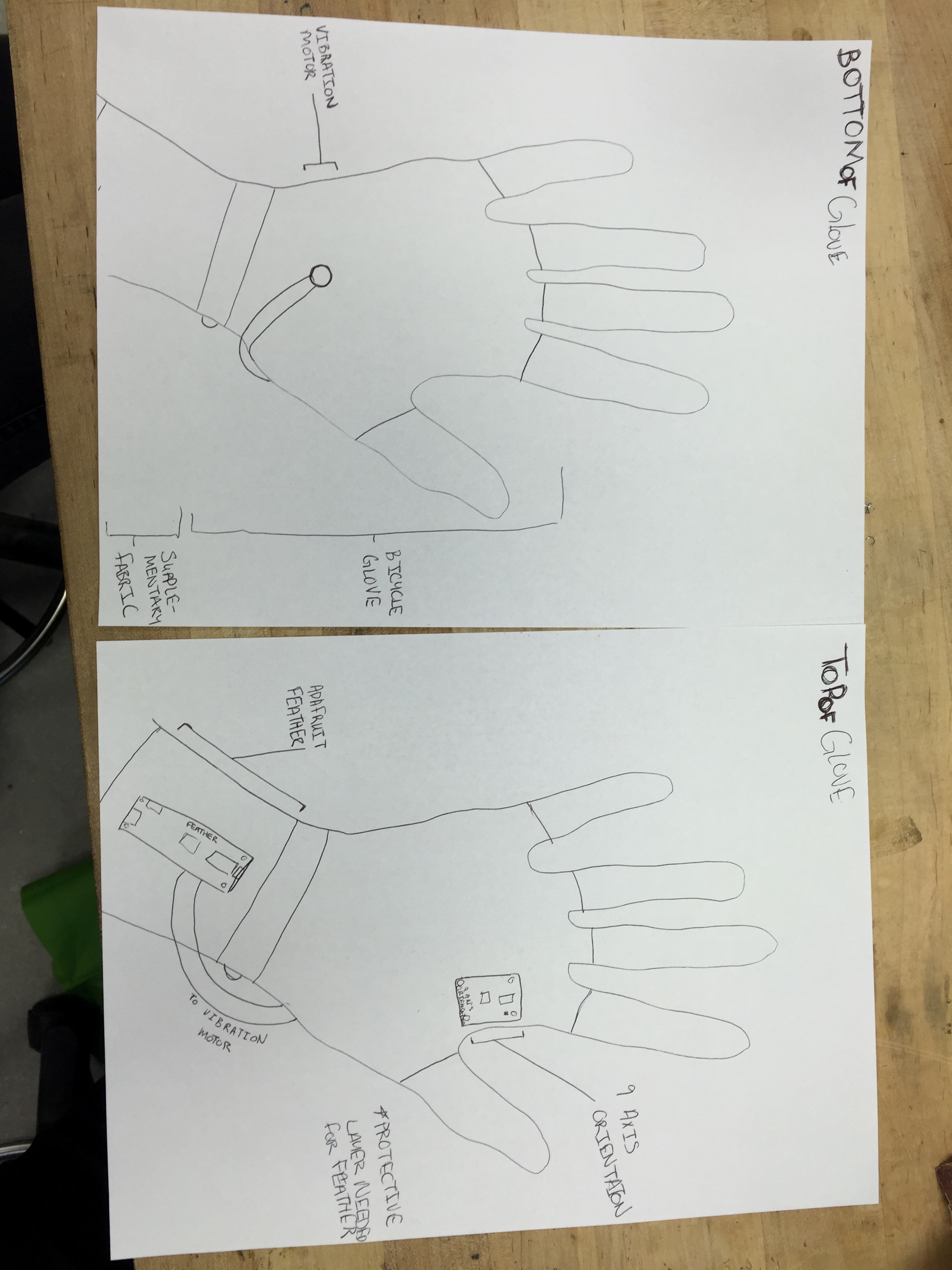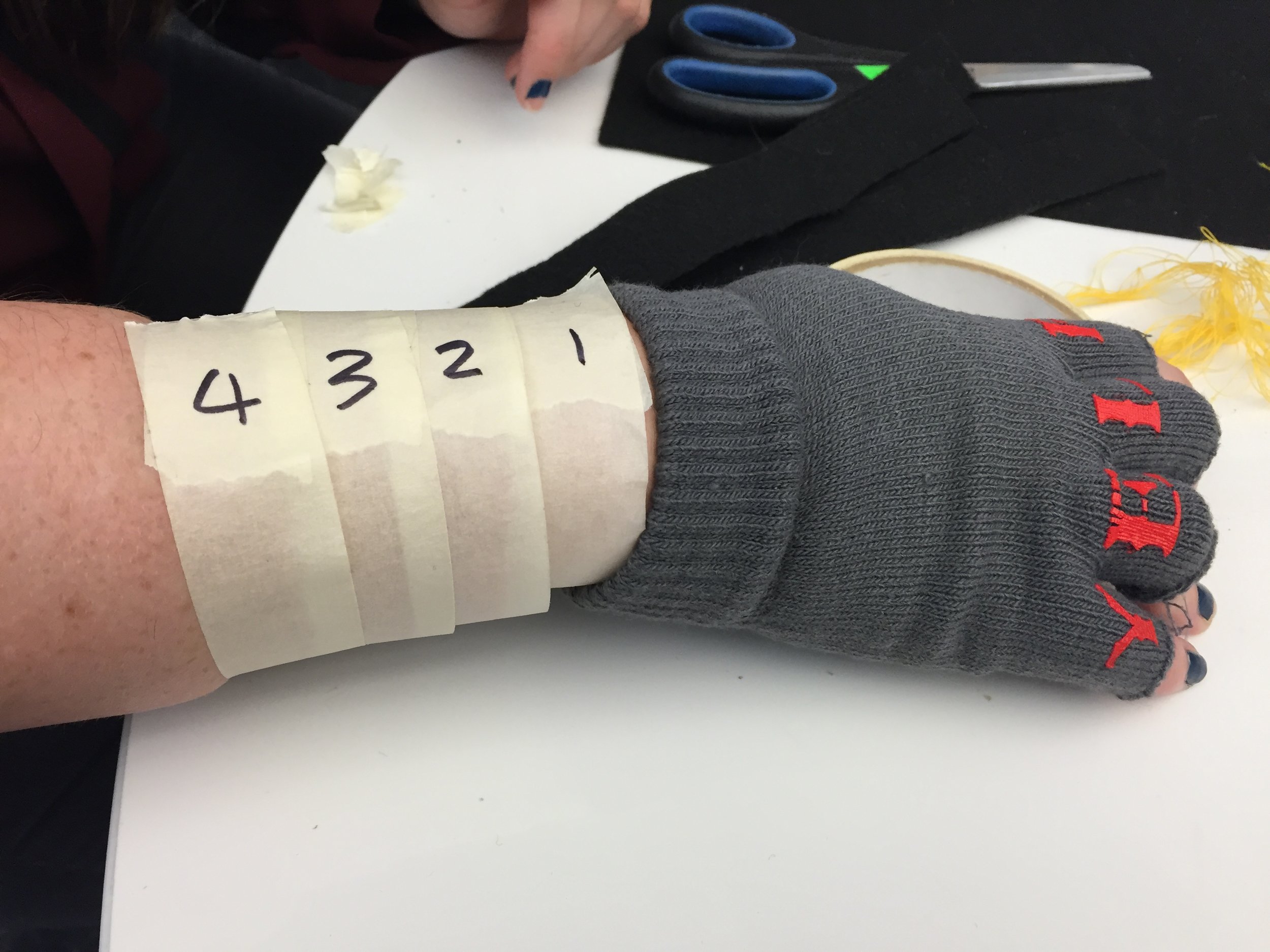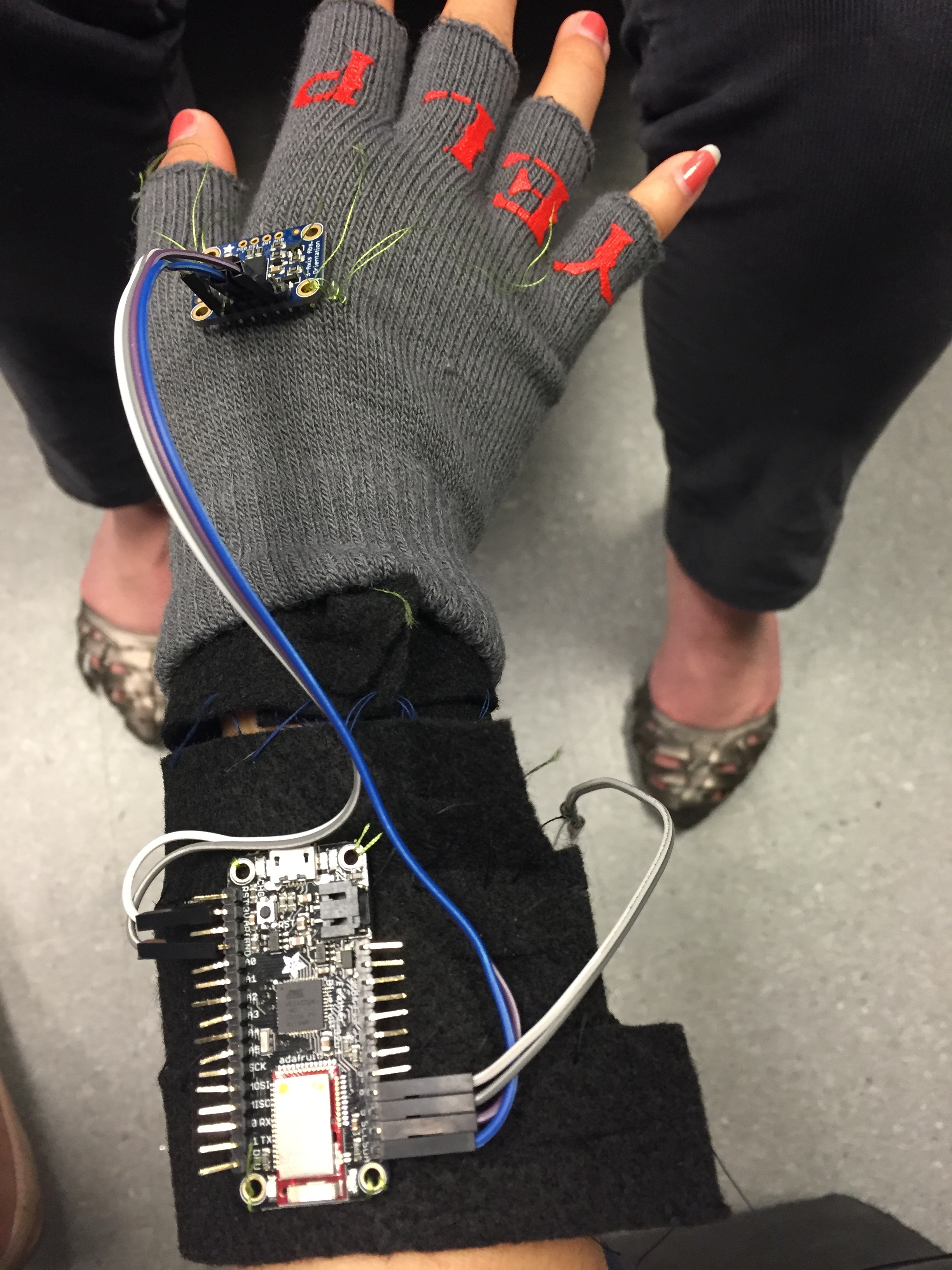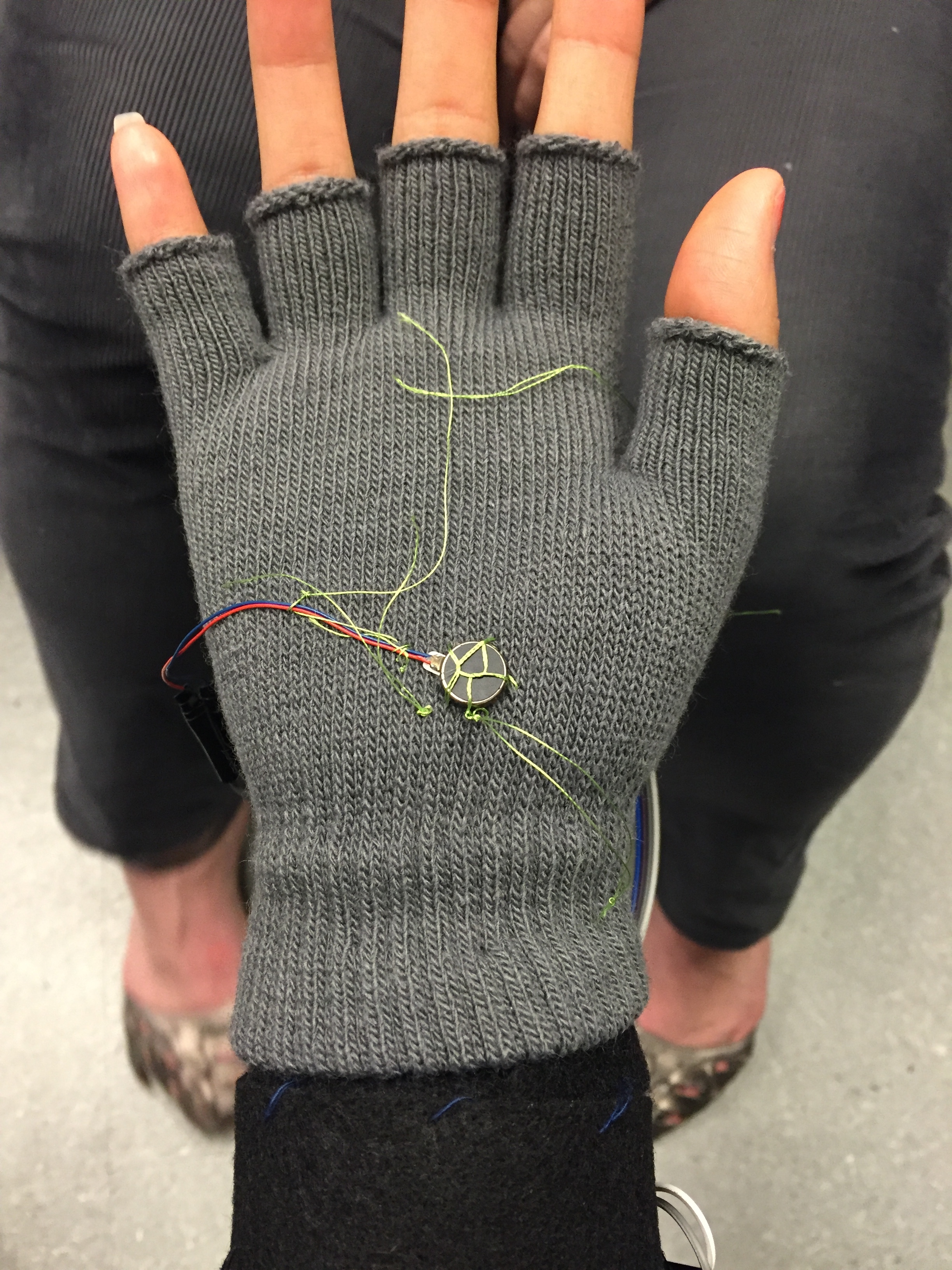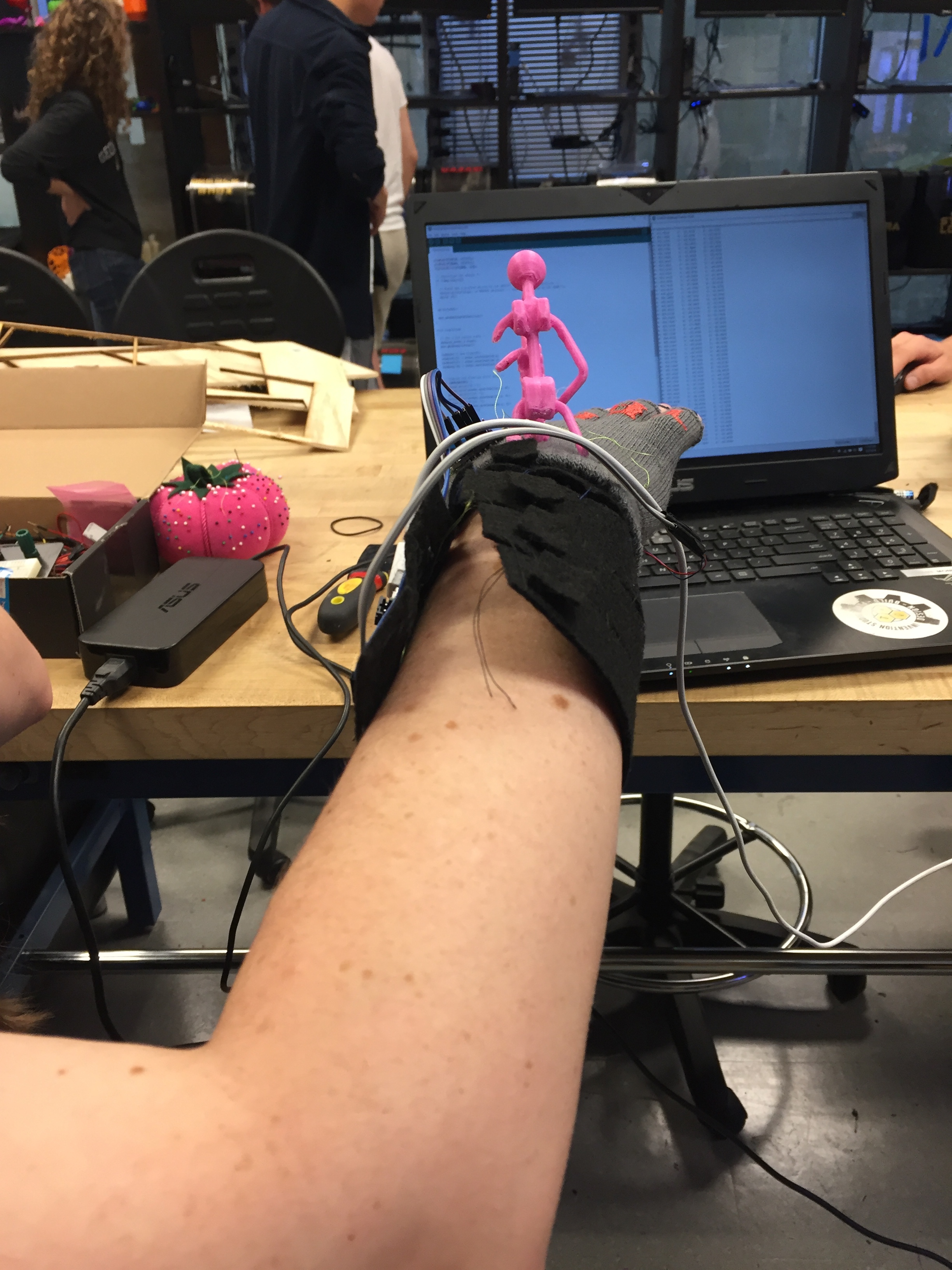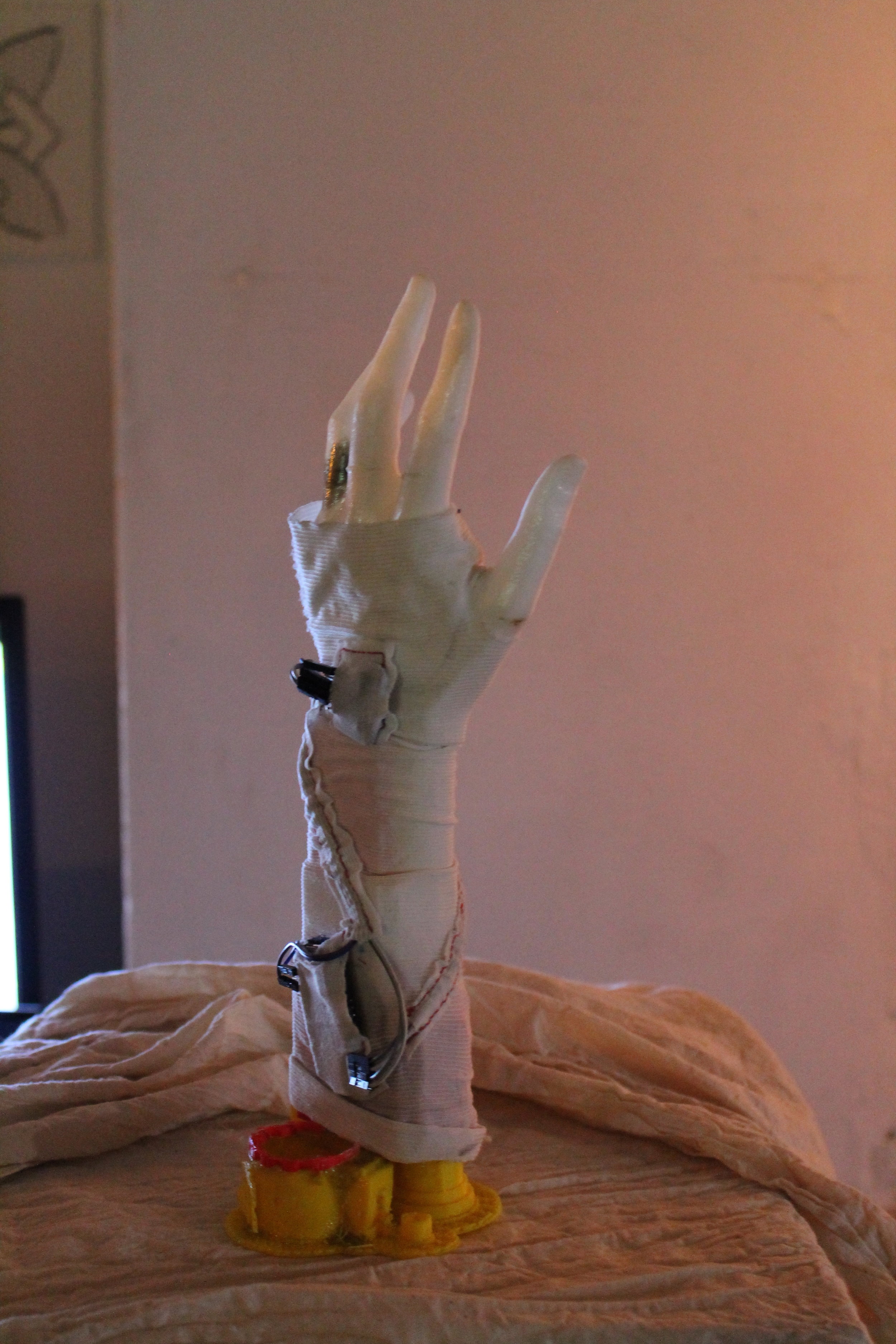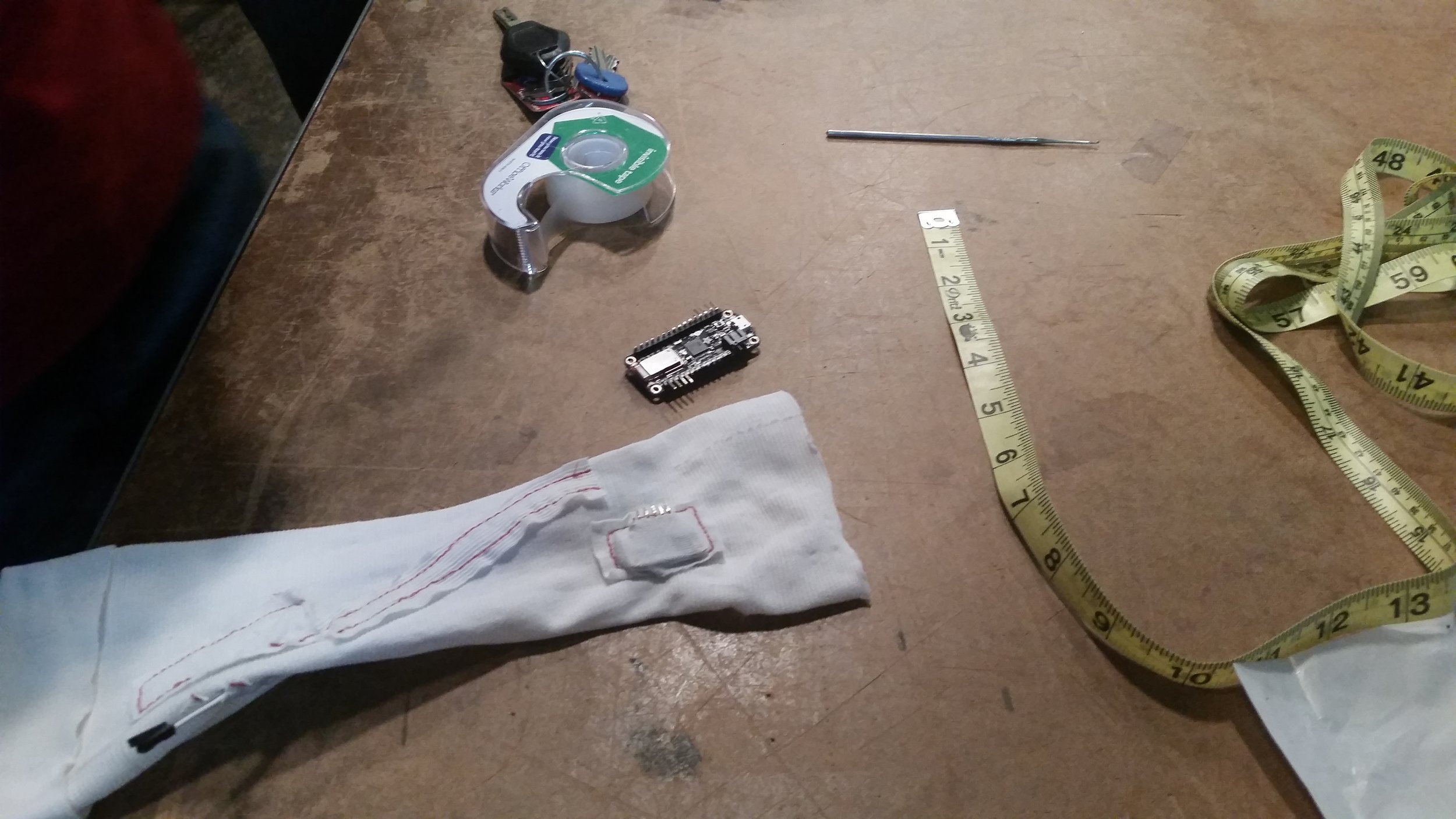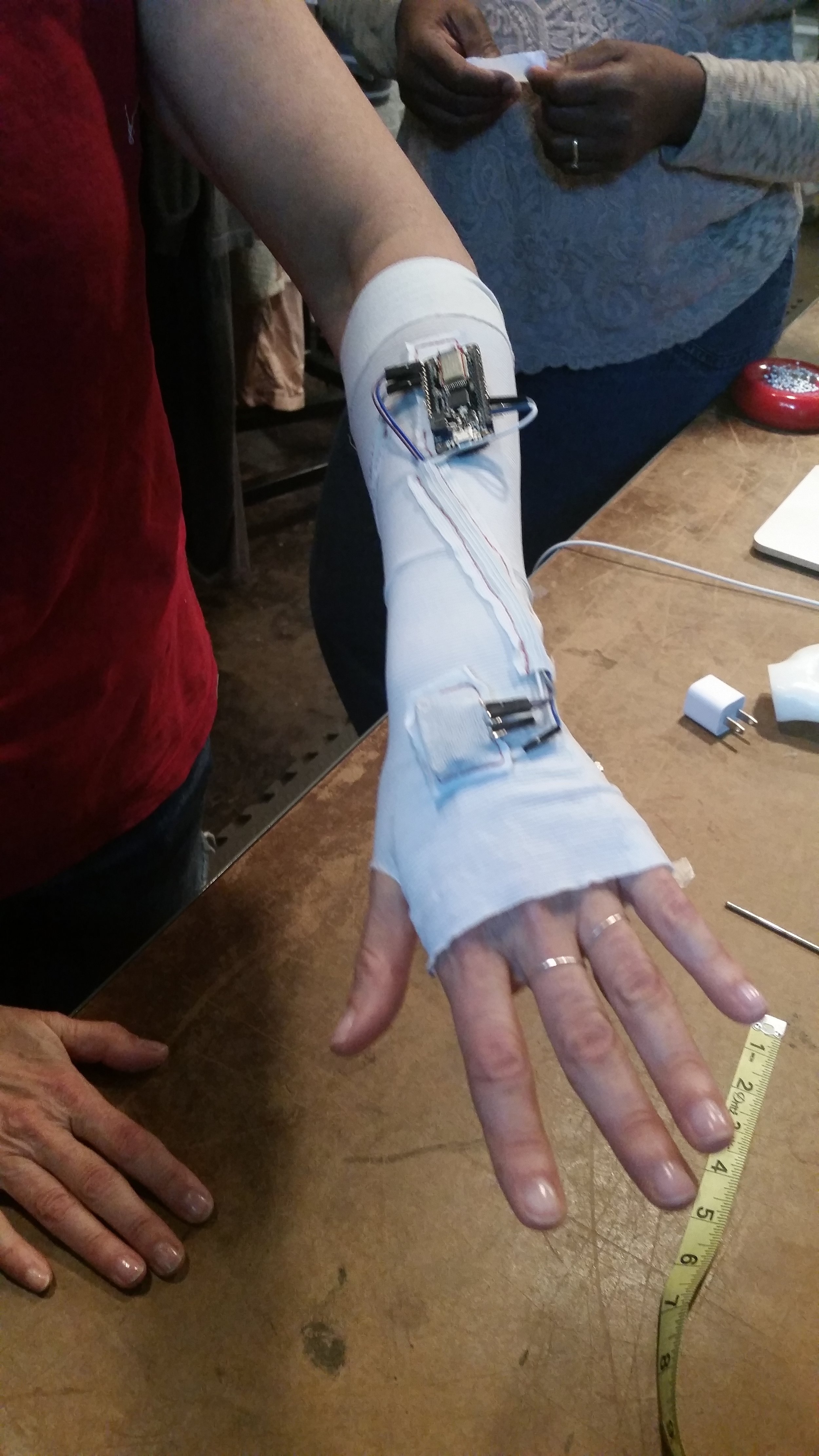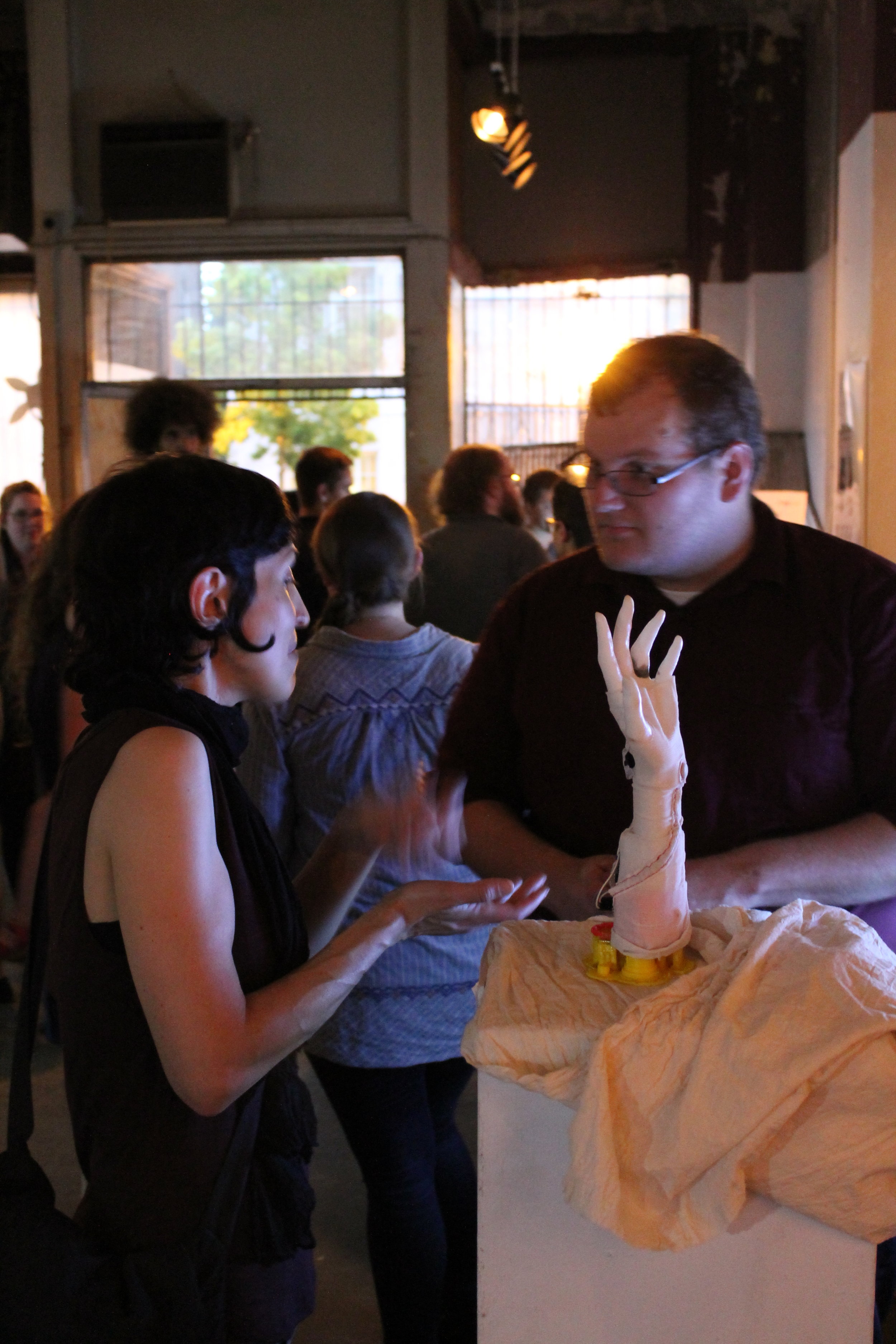Zerowaste Karen Glass needed to create a more meditative space for its stitch artists.
CLIENT
Zerowaste Karen Glass
SKILLS
Experimental Design, Physical Prototyping, Contextual Research & Testing, Project Management, Sketching, Illustrator
Team
Jess Lewis, Josh Moore, Lu Dong
―
Problem Space
Zerowaste Karen Glass, an Atlanta fashion studio, needed to create a more meditative environment for the many domestic abuse survivors that comprised its workforce. Increasing meditative creation process would increase efficiency and capacity for training stitch artists. This wasn’t just beneficial to stitch artists - it would also create more consistent quality of art.
Solution
A meditative glove. The glove was attached to a 9-axis accelerometer sensor that recognizes stitch artists’ hand movement as they stitch. This input of hand movement would go be processed, analyzed, and a meditative space would be created by both an in-glove vibration motor and an always-playing visualization of the stitching data collected through Unity.
Take Aways
Calibration is hard. Being able to read gesture and purposeful movement data from raw is not easy at all.
Making all the components - glove ergonomics, data gathering, etc, - work together seamlessly and have the interaction still make sense is a challenge.
Data rates are a large factor in visualization representation and data mining.
Vibration motors need to be placed on certain areas of the palm to prevent muscle fatigue or numbness.
What we did:
1.
First, we met with our client, Karen Glass, who walked us through her values, her vision, and her problem space. We discovered the ethos and guiding principles of Zerowaste and asked questions that helped uncover some of her expectations. Based on this, we brainstormed multiple options, researched inspiration, and put together a slide deck we presented to the client.
2.
After an enthusiastic client reception, we got to work. First, we made a list of components we needed based on tech needs and ordered them. While we waited for them to arrive, we studied hand motions of common stitches. When they arrived, we started sketching and stitching lo-fi physical prototypes. We used this prototype to start working on the algorithm structure and data calibration.
3.
We took the prototype to Zerowaste’s studio to test the physical design as well as gather accurate stitch data for calibration. We gathered a lot of helpful feedback on the design and started our collaboration on a second iteration.
We created a new iteration of the glove and finessed the code and calibration. Because we had so much data and an interesting mental model, we decided to make a visualization in Unity to further drive our premise home. Video of this visualization can be found at the end of the project documentation video.
4.
Algorithm and data structure brainstorming notes.

